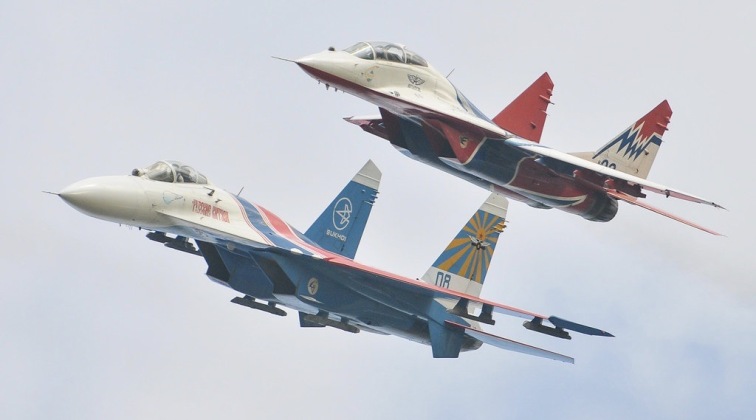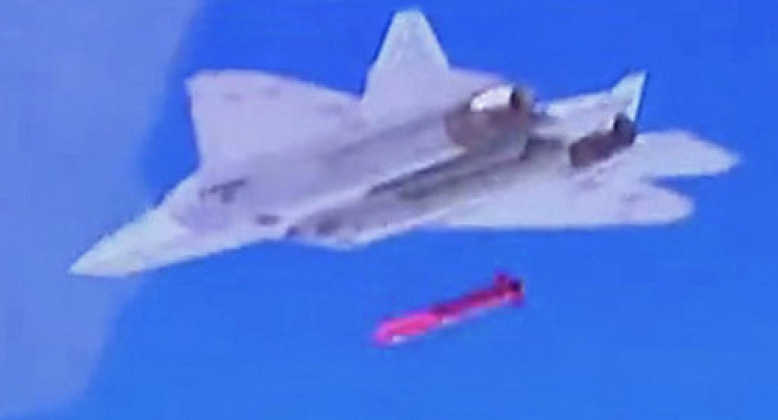News
Where Are Russia’s New MiG-35s? Why the High Tech Fighters Haven’t Fought in Ukraine But Recently Flew in China
At the China International Aviation & Aerospace Exhibition held from November 8-13, better known as the Zhuhai Air Show, the Russian Air Force deployed four of its fighter aircraft to participate including Su-35 and Su-34 heavyweights, a Su-57 next generation fighter, and perhaps most notably a lighter MiG-35. The MiG’s presence has drawn attention to questions regarding its future as a viable fighter program, with only six having entered service in the Russian Air Force while plans to commission a fleet of 35 or more appear increasingly unlikely to materialise. This has contrasted to the Su-35 and Su-34 developed in parallel, of which over 100 of each have been commissioned, and the Su-57 of which 76 have been ordered. While the Su-35 and Su-34 represent heavily enhanced derivatives of the Su-27 Flanker, the Soviet Union’s top Cold War era fighter, the MiG-35 is similarly derived from the MiG-29 – which was designed in the USSR as a lighter counterpart to the Flanker with much lower production and operational costs.

Although first unveiled in 2007, the first MiG-35s were only commissioned into service in 2019 with the Russian Air Force’s lack of interest in medium weight fighter classes being largely responsible for the delay. While the aircraft has been reported by Russian state media to need 80 percent less maintenance than the original MiG-29, it is still seen as less cost effective than Flanker derivatives or the Su-57, with its shorter range, lower weapons payload and smaller radar limiting its usefulness in a potential war with NATO member states. Russia’s significant strategic depth and lack of need for fighters capable of operating from makeshift runways close to the frontlines, which the MiG-35 is optimised for, means the aircraft was always expected to see the large majority of production allocated to meeting export orders if the program was ever to succeed. The MiG-35’s prospects were seen to have been further diminished by the development of an entirely new medium weight fighter with next generation capabilities, the S-75 Checkmate, which was unveiled in 2021.

The MiG-35’s appearance at Zhuhai follows a notable absence from the nine month Russian-Ukrainian War, making it the only major class of combat jet in the Russian Air Force not to have seen action. Although the Su-57 is fielded in similarly small numbers, with only six in service, the fighter has been deployed extensively for operations against Ukrainian forces including for air defence suppression missions and possibly, although not confirmed, for a single air to air engagement. The MiG-35’s absence may well reflect the very limited place which fighters other than heavyweights have in the Russian Air Force, as well as the greater emphasis placed on gaining combat experience operating the Su-57 and other classes which are seen as much more important to Russia’s defence.
The MiG is nevertheless well suited to the kind of combat environment faced in Ukraine, with its relatively limited range not being a hindrance against a nearby adversary while its emphasis on electronic warfare capabilities and sophisticated sensors and precision guided weapons make it potentially lethal particularly at longer ranges. Although the MiG-35 was developed to carry a nose mounted Zhuk-A/AM AESA radar, making it the only operational Russian fighter with such a primary sensor other than the Su-57, the MiGs purchased by the Russian Air Force have notably integrated downgraded Zhuk-M radars to reduce costs, which restricts the class’ usefulness for electronic warfare and for air defence suppression missions.

While there are benefits to holding new fighter classes back from participating in conflict, in order to deny adversaries opportunities to assess their capabilities, the MiG-35’s absence from the frontlines in Ukraine appears to be much more driven by the Russian Air Force’s neglect for the class and lack of interest in its evolution. The fighter program may well still have a future, with many of its technologies having been integrated onto the MiG-29M, a very similar but lower cost aircraft produced at the same Sokol Aircraft Plant, which has been popular on export markets although not in Russia itself. New technologies, such as laser weapons, are reportedly also currently under development to enhance the aircraft. The MiG-35 remains a potentially promising contender for export contracts, with India and Egypt considered among its leading possible clients, although the MiG-29M and refurbished Soviet-built MiG-29s such as the MiG-29SMT and UPG, recently delivered to Syria and India, provide cheaper alternatives with many similar capabilities. This has been a primary factor reducing the appeal of the MiG-35 itself. The class’ future in the Russian Air Force, however, appears far from promising with its status during an ongoing war with Ukraine being a notable indicator of this. Should the potential for an export contract be seen to rise, there remains a significant possibility that MiG-35s could see combat either in Ukraine or in ongoing counterinsurgency operations in Syria as a means of signalling the Russian Defence Ministry’s faith in the aircraft, with its absence from both fronts otherwise potentially being interpreted as implying the opposite.












